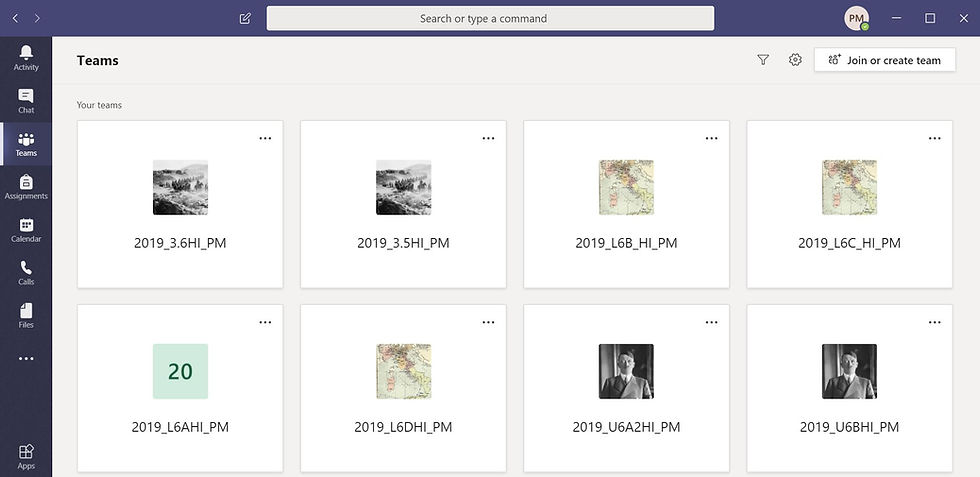A breakdown of...classroom layouts
- Teacher Breakdown

- Apr 26, 2019
- 5 min read
"He would really benefit from being sat at the front" - said every parent ever...

How a classroom is laid out is not really something that is discussed during teacher training. Even on your first day, chances are you walked into your classroom and just simply left the room the the way it was. After all, you don't want to be known as 'that' teacher who thinks that the current layout isn't good enough. It might be that you don't even have to think about classroom design too much, because how many teachers still have the luxury of their own room?!
Despite this, classroom layout is certainly something that you should consider in the lead up to September and I can testify to the impact that it can have on lessons. When I was shown around my Department on my first day, I was told: "You're so lucky to teach in this room"; "Look at the original beams..." and "Doesn't it make History come alive!", while my internal reaction was: "This room is a mess and there is rising damp everywhere..."
I was also told that the room was used by the local Freemasons every weekend (the fraternal cult, not the DJ duo from Brighton...) and that they tend to destroy whatever table layout that is set out. While this was incredibly frustrating at first, it eventually provided me with a bit of a light bulb moment: "Instead of putting the tables back how they were, how about I try something new..." Now, this is not the sort of groundbreaking notion that would normally occur to me on a Monday morning, but it coincided with the January blues that every teacher experiences, where they question everything about the job: "I hate my commute!", "SLT are driving me crazy!", "None of my whiteboard pens work!!"
For me, the January thorn in the side of my two-piece suit was the behaviour of some of my KS3 classes. It wasn't that the behaviour was 'bad', but I think I may just have ridiculously high standards where I want to hear a pin drop as I am talking (maybe this is also due to my own egotism...) The room was designed with all tables circling the teacher's desk, a little like 'The Host' layout in the diagram above. Although existing teachers were saying: 'This is great for discussion...' and 'I like having all eyes on me...', what they didn't mention was how it turned every History lesson into Wrestlemania, with chair-throwing adolescents jeering at one another across the purposeless void; a void where you would find me, the awkward referee trying to bring some sort of order to the potential bloodbath about to ensue. OK, perhaps I am being slightly dramatic, but the sentiment is still the same - the layout simply didn't work.
Oh, and those original beams and parquet floors that other teachers raved about? They just amplified the chaos and I ended most lessons rocking back and forth under my desk...
So I decided to trial L-shaped desks with my KS3 and KS4 classes - similar to 'the researcher' layout shown in the top diagram. My logic was that I did a fair bit of pair and group work in my classes, but the thought of grouped blocks of desks terrified me (four kids facing each other? Are you mad?!) - so the 'wing' shape was a nice compromise. Now, I cannot understate the impact that this had on the behaviour in my classroom - it is perhaps only comparable to when Cady Heron discovered that the limit did not exist back in 2004 (shout out to all the millenials that get that reference...) Obviously, I still had the occasional chatter between pupils, but it was so much easier to manage when it was contained within a block of tables, rather than across the room. Also, as soon as a pupil turned around to talk to his friend, I could easily spot him and sent to the Chokey, which made behaviour management so much smoother.
Now, I obviously recognise that this layout would not necessarily work for every teacher, subject, age group, etc. Whenever I teach A-Level classes, for example, I switch back to more of a 'seminar' format, as I can trust these older pupils to behave and collaborate appropriately (well, mostly...) So maybe the thing I am trying to get across is that new teachers (and in fact all teachers) should see classrooms as being changeable environments that facilitate individual lessons. It is just another tool that teachers can employ to improve focus, engagement or collaboration. You could change the layout of the classroom every lesson if you really wanted - perhaps if you were doing a group task, debate, project work or assessment. Obviously, the downside of this is that moving tables around is a huge inconvenience (the five minutes you put aside will end up being ten), so choose your battles and decide whether the layout of the classroom will have a significant benefit.

So what do the researchers say about classroom layout? Well, they seem to agree that flexibility is the key to effective learning:
'Flexibility and openness are key attributes in promoting a community of learners, and allowing students to learn holistically, encouraging student engagement in learning.' (M. L. Rands and A. M. Gansemer-Topf, 2017)
While the debate rages on between group work and direct instruction, it is perhaps best for teachers to use a combination of strategies to improve student engagement. Fernandes, Huang & Rinaldo argue that it would be beneficial for students if the learning activity dictated the seating (Fernandes, A. C., Huang, J., & Rinaldo, V., 2011). So having a layout that provides the flexibility to quickly switch between group and individual tasks is perhaps the way forward and many researchers agree:
'The flexible classroom space facilitated the use of various student engagement techniques and also inspired instructors and students with an array of pedagogical choices. Given the importance of flexibility in classroom design, existing and future classroom spaces could be evaluated through the flexible properties of the space' (Mohanan, 2002)
Another thing to think about, is to put yourself into your students' shoes - when was the last time you viewed things from their perspective? When you show a video through the projector, can every pupil see what is going on? You can have the 'best' layout in the world for learning, but if pupils constantly have their back to you, then what is the point?
My final piece of advice is to be consistent throughout the year. A recent study found that: ‘Teachers mentioned they start with rows in the beginning of the school year to get students to concentrate and try to work with groups later in the year' (Gremmen et. al., 2016). While this fits in with the standard advice of 'Don't be jolly until Christmas' and 'Be a witch until Halloween' (who comes up with these?), I actually think that pupil learning and behaviour suffer in the long-term if you do this. Remember that the layout of a classroom is just one method you can use to maintain good behaviour, so relying on rows in September is not going to solve all of your problems. Not only that, but you may get a few sceptical looks from pupils when you decide to 'switch it up' half-way through the year; this might even lead to worse behaviour now that the caged beasts have been introduced to one another on grouped desks!





Comments